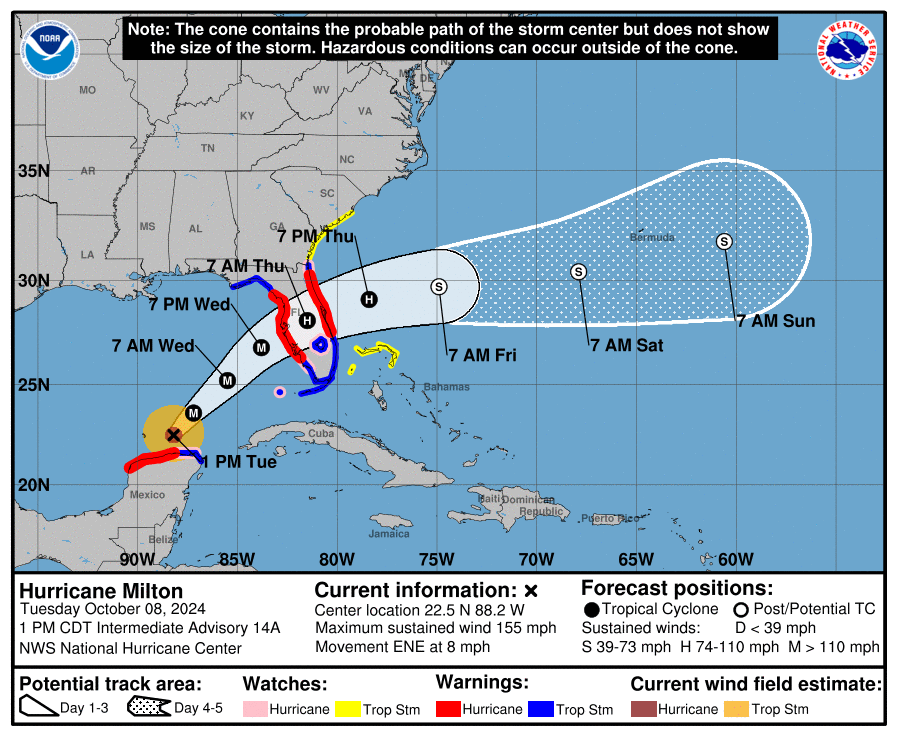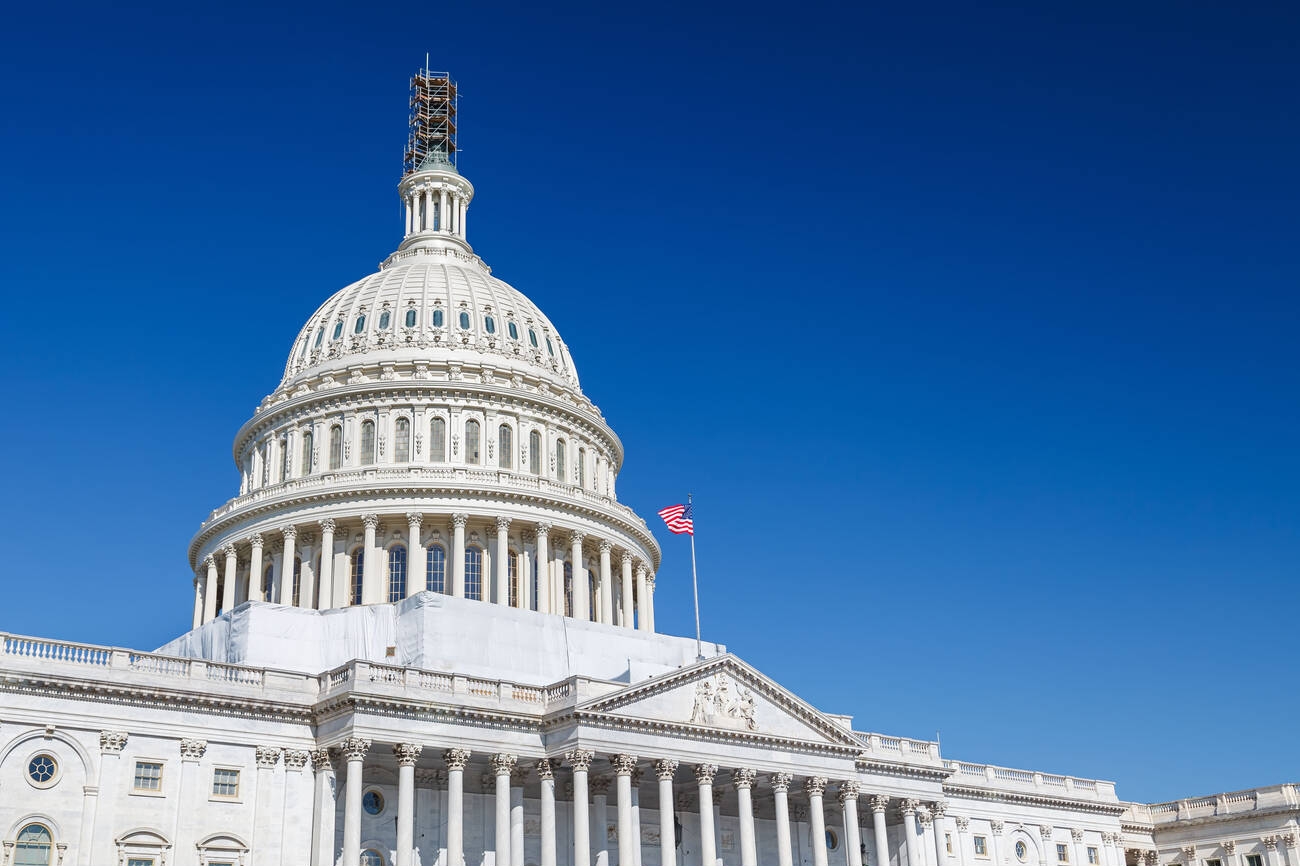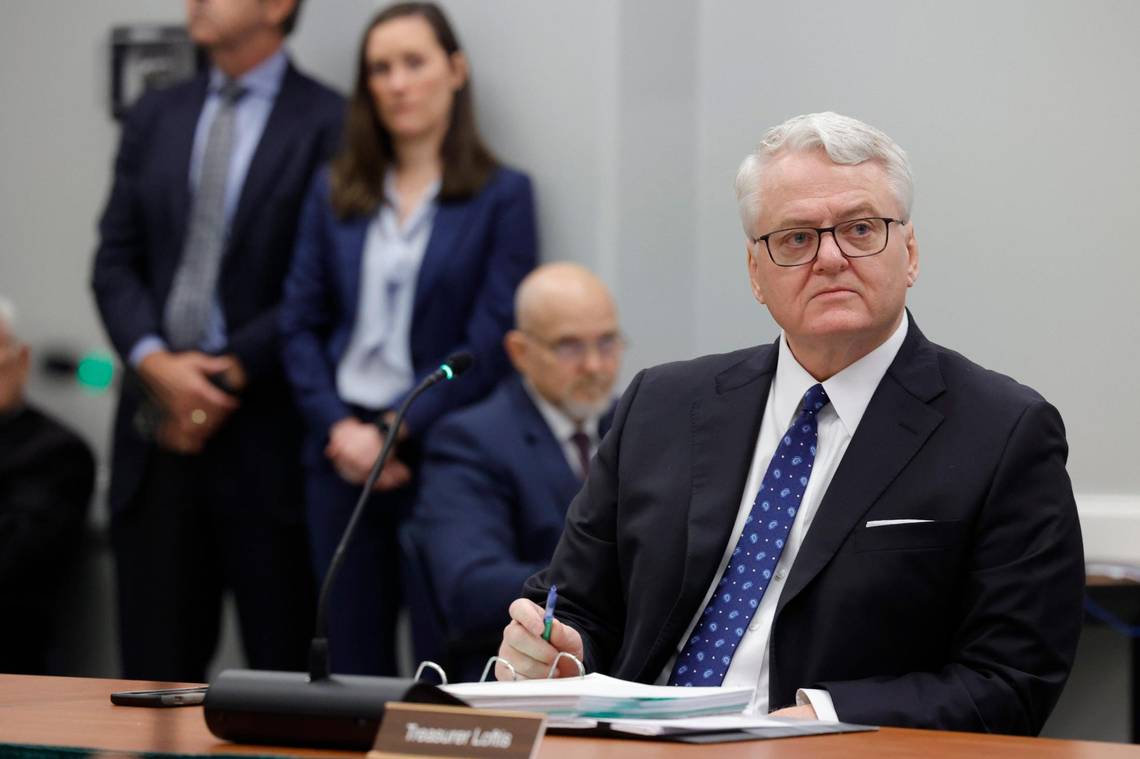Alex Harris
Miami Herald (TNS)
MIAMI — Evacuees streamed away from the Gulf Coast, clogging roads and draining gas stations. Major airports in Tampa and Orlando prepared to shut down. Schools announced pending closures across much of the state, including in South Florida. Millions of residents across the state were under hurricane warnings or watches,
On Tuesday, much of Florida was hunkering down for the looming arrival of Hurricane Milton, a Category 4 hurricane that could deliver on the most damaging strikes to the state in history.
After a brief dip, Milton was strengthening again Tuesday morning, still on track to slam into the Gulf Coast somewhere near the heavily populated Tampa Bay region.
Though the storm’s sustained winds had eased somewhat from a near-record 180 mph, it was still packing extremely powerful 155 mph winds, and the slight slackening did not reduce Milton’s biggest threat. It was expected to push up to 15 feet of life-threatening storm surge across a huge swath of the coast, anywhere between Fort Myers Beach and Crystal River.
From there, Milton could plow a path of record-breaking damage across the state, whipping by the theme parks of Orlando as a Category 2 hurricane before exiting along the Space Coast. Forecasters cautioned that as Milton’s wind speed falls, likely to a Category 3 before landfall sometime late Wednesday or early Thursday, the small storm will expand its size, sweeping its damaging winds across a broader area.
Forecasters expect the wind field of the now-compact storm to double by the time it comes ashore — bringing 125 mph sustained winds and higher gusts, plus record-setting storm surge, to much of Florida. Milton could also bring more than a foot of rain to areas north of its eye, up to 18 inches in some spots.
“You’re going to see flooding of homes and businesses, you’re going to see rescues. It will flood in areas that don’t normally flood,” said Mike Brennan, director of the National Hurricane Center, in a Tuesday morning broadcast. “I’m pleading with you to get out of those storm surge evacuation areas if you have not yet.”
That threat put almost the entire state, including Miami-Dade and Broward counties and the Florida Keys, under some sort of hurricane or tropical storm warning or watch. Southeast Florida could see tropical storm force gusts beginning Wednesday afternoon through Thursday morning, with flooding rains from Milton’s outer feeder bands.
Evacuations underway
At 2 p.m., there was little change in the track with the center of the National Hurricane Center’s cone of concern aimed at the south end of heavily populated Tampa Bay, still reeling from the region’s worst storm in a century — Hurricane Helene — just two weeks earlier.
Milton, on its current track, could be far worse. The latest estimates call for up to double the storm surge seen in Helene, which swamped tens of thousands of homes.
President Joe Biden said Tuesday he is postponing a diplomatic trip to Germany and Angola to help oversee his administration’s response to Hurricane Milton.
“This could be the worst storm to hit Florida in over a century,” Biden said at a news briefing. “God willing it won’t be, but that’s what it is looking like right now.”
FEMA Administrator Deanne Criswell said that Florida is in “good hands” and that the agency has enough funding to support the response efforts for Hurricanes Helene and Milton.
In a Tuesday morning press conference, Jared Perdue, head of Florida’s Department of Transportation, urged residents to leave as soon as possible if they’re evacuating. Officials said traffic was up 150% on major highways, so the breakdown lanes on highways were open as extra lanes of traffic. Tolls were lifted for west-central Florida as evacuations were called in 14 counties.
“Unfortunately every storm we see traffic fatalities because people wait until the last minute to leave,” he said.
To address this, Gov. Ron DeSantis said the state planned to open at least four backup shelters of last resort near highways so that drivers stuck in traffic as the storm approaches have somewhere to go. These warehouses can hold thousands of people, he said, including up to 10,000 at one site.
Those counties are also working double-time to clear the streets of waterlogged appliances and furniture from Hurricane Helene before Hurricane Milton’s winds turn them into projectiles. The state has assigned hundreds of employees to help, and it plans to ask FEMA for permission to pay debris haulers even more to surge in from other states. However, DeSantis said, they can’t get to all of it.
“It may not have been humanly possible to have all the debris cleaned up from Helene before Milton hit, just because of how much there was,” he said.
On Tuesday morning, counties began shutting off water to barrier islands, including Siesta Key and Casey Key in Sarasota, to try and protect the water and sewer system. Pinellas County will “most likely” do the same with its sewage system, the Tampa Bay Times reported.
The governor warned residents that their window for preparations was shrinking, and everyone should be hunkered down by Wednesday morning.
“Let’s prepare for the worst and pray we get a weakening,” he said. “We must be prepared for a major, major impact on the west coast of Florida.”
Turn toward Florida begins
Milton, still about 520 miles southwest of Tampa, also began slowly gaining some latitude Tuesday, signaling that it may be starting its forecast turn to the northeast toward Florida. The NHC had pushed its projected landfall back slightly, possibly to the early morning hours on Thursday, but its impacts along the coast will be felt at least a day earlier.
On Monday, Milton exploded into a frightening Category 5 storm with 180 mph maximum sustained winds. Its barometric pressure — a measure of intensity — dropped to the fourth-lowest on record at one point.
“Milton has the potential to be one of the most destructive hurricanes on record for west-central Florida,” National Hurricane Center forecaster Eric Blake wrote in the 5 p.m. Monday update.
Overnight, the storm underwent an eyewall replacement cycle, where a new, larger eye forms on the outskirts of the current one and eventually replaces it. The process tamps down wind speeds temporarily but grows the wind field.
Tuesday morning satellite found a slightly bigger Milton with just a single eye again — a sign the storm is ready to strengthen again. The latest hurricane center forecast calls for it to regain Category 5 wind strength on Tuesday before storm-shredding wind shear near Florida bats it back to a Category 3 ahead of landfall.
“An expanding wind field, the angle of approach to the coast, and the formidable strength, all will lead to a deep & damaging surge in Florida,” wrote John Morales, a hurricane specialist at NBC6, on Twitter.
——-
(Miami Herald Staff Writers Milena Malaver and Ana Ceballos contributed to this report.)
_____
©2024 Miami Herald. Visit at miamiherald.com. Distributed by Tribune Content Agency, LLC.
Thanks for reading CPA Practice Advisor!
Subscribe Already registered? Log In
Need more information? Read the FAQs




